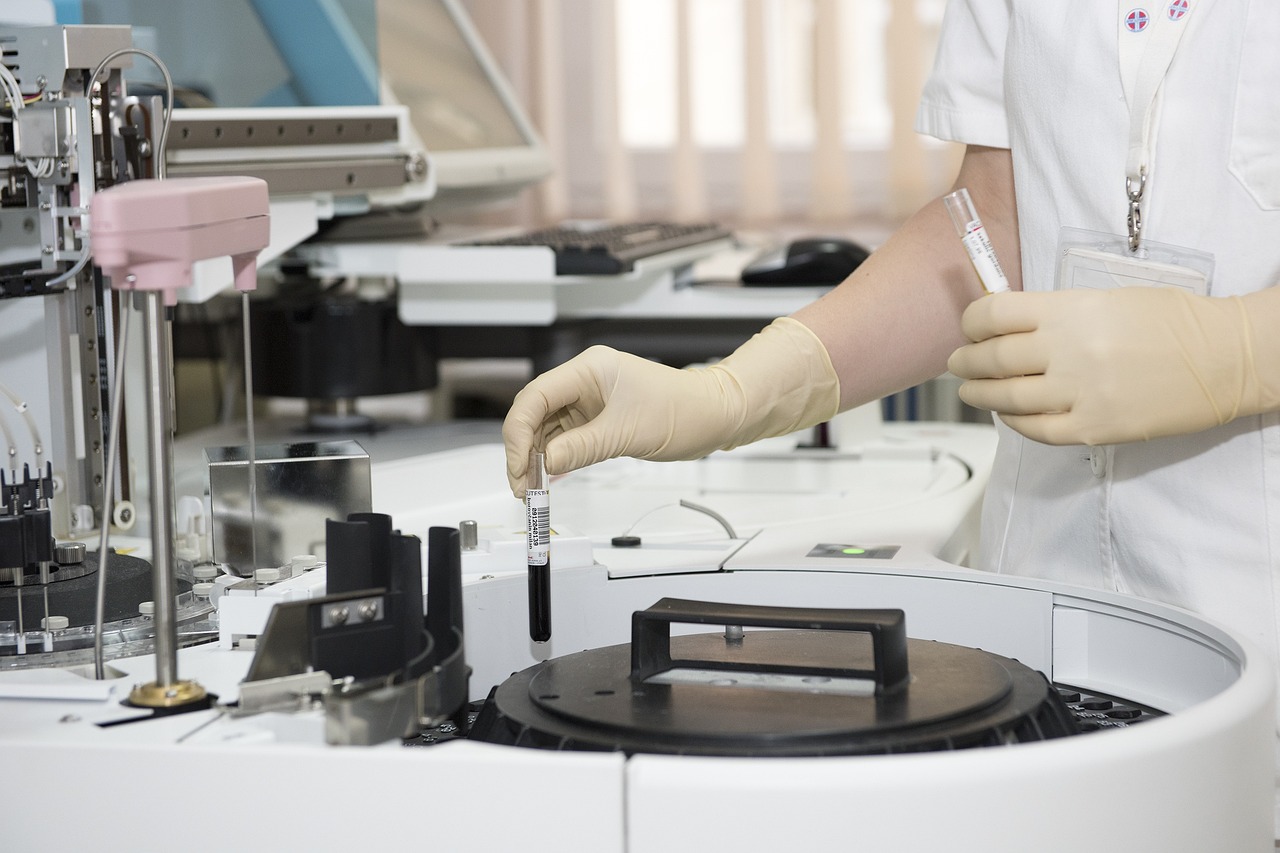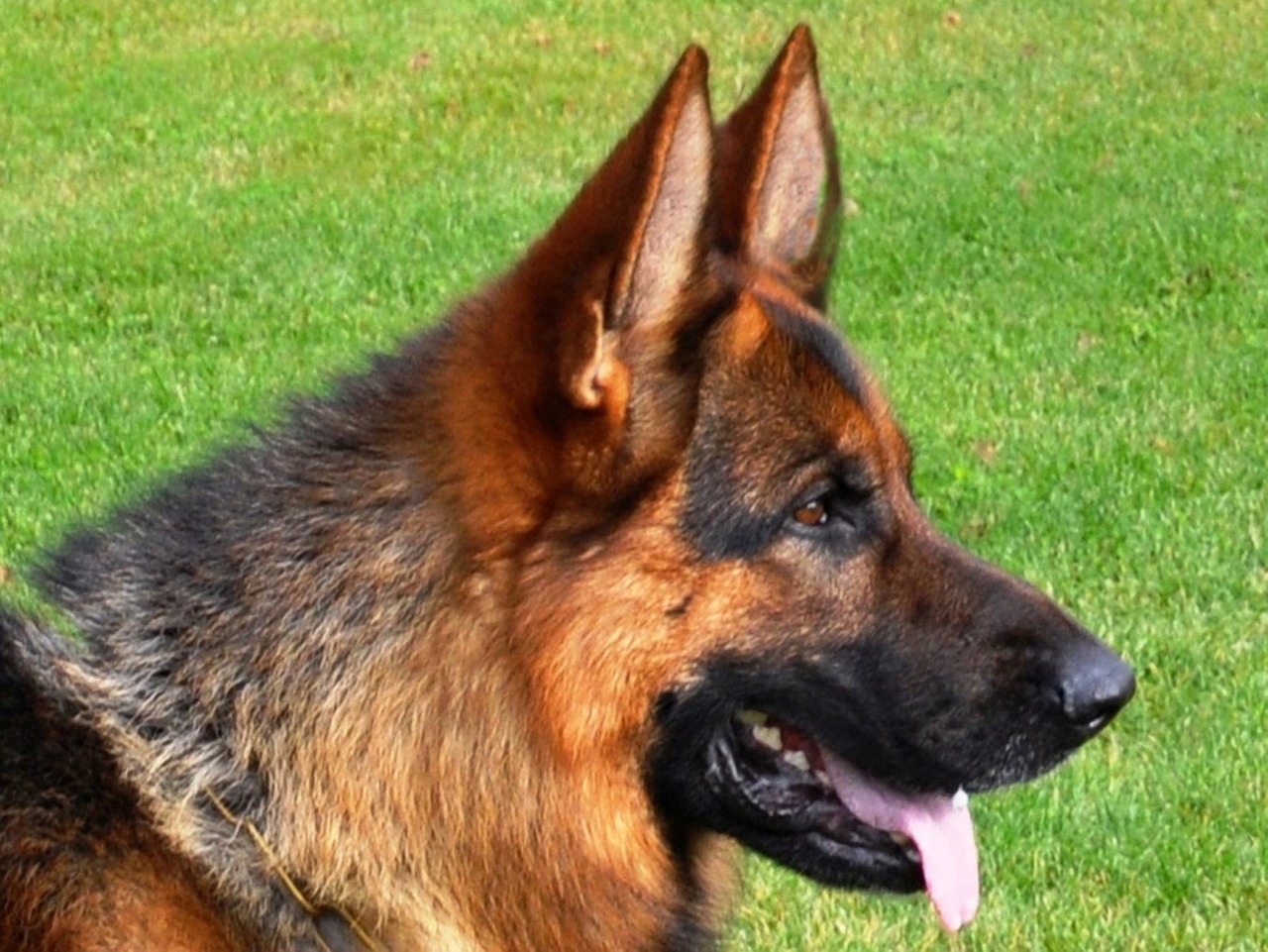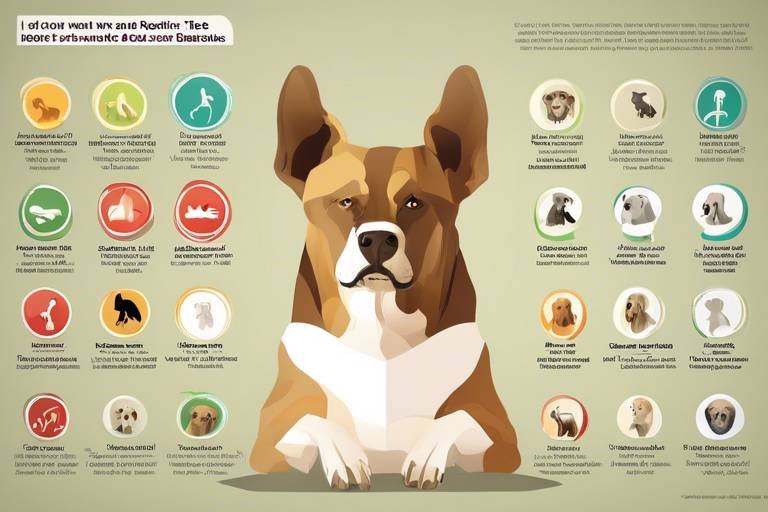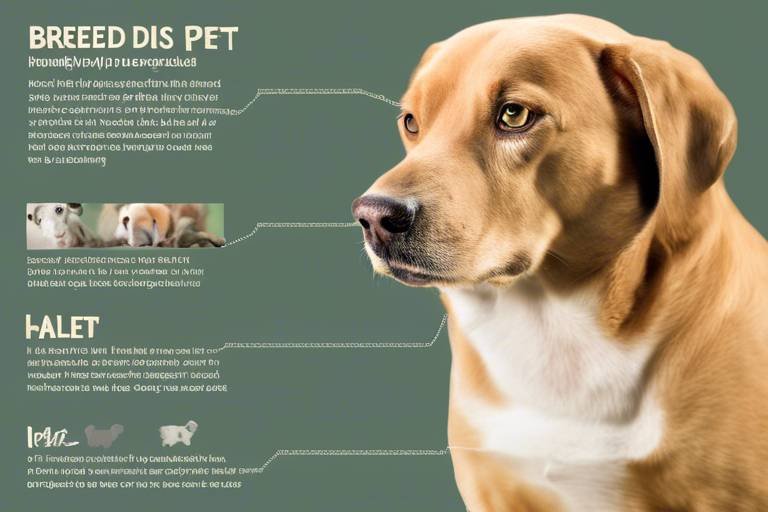The Most Common Health Problems by Dog Breed
As a devoted dog owner, understanding the unique health challenges that your furry friend may face is crucial. Different dog breeds come with their own set of characteristics, and while these traits can be adorable, they often come with a price—specific health issues that can affect their well-being. This article explores the prevalent health issues associated with various dog breeds, helping pet owners understand potential risks and make informed decisions regarding their furry companions' care.
When you think about it, owning a dog is a bit like being a parent. Just as you would research the best practices for raising a child, it’s essential to educate yourself about the potential health problems your dog breed might encounter. From the energetic Labrador Retriever to the charming Poodle, and the sturdy Bulldog to the intelligent German Shepherd, each breed has its own vulnerabilities. By being proactive and aware, you can help your dog live a longer, healthier life.
Let's dive deeper into some of the most common health problems associated with popular dog breeds. We’ll explore not only the issues but also preventive measures and treatments that can help keep your canine companion in tip-top shape. By understanding these challenges, you can be better prepared to manage your dog's health effectively.
Labrador Retrievers are known for their friendly nature, but they are also prone to specific health issues, including hip dysplasia and obesity, which can significantly affect their quality of life. Hip dysplasia occurs when the hip joint doesn’t fit snugly into the hip socket, leading to pain and arthritis over time. Obesity is another common issue, often stemming from overfeeding and lack of exercise. It’s essential to monitor their diet and ensure they get plenty of playtime to keep them healthy and happy.
Poodles, available in standard, miniature, and toy sizes, face unique health challenges, such as hip dysplasia and certain genetic disorders. Understanding these risks can aid in prevention and early detection. Regular veterinary check-ups and a balanced diet are key to maintaining their health. Poodles are also known for their intelligence, which means they thrive on mental stimulation—don’t forget to engage their minds with toys and training!
Hip dysplasia is a common condition in Poodles that can lead to arthritis and mobility issues. Regular veterinary check-ups and maintaining a healthy weight are crucial for prevention. If you notice your Poodle limping or showing reluctance to exercise, it’s vital to consult your vet. Early intervention can make a significant difference in your dog’s quality of life.
Recognizing the signs of hip dysplasia early can help in managing the condition effectively. Symptoms may include:
- Limping or favoring one leg
- Difficulty rising from a lying position
- Reluctance to run or jump
Treatment for hip dysplasia varies from weight management and physical therapy to surgical interventions, depending on the severity of the condition and the dog's overall health. Your veterinarian will help determine the best course of action tailored to your Poodle’s needs.
Poodles are susceptible to various genetic disorders, including progressive retinal atrophy and Addison's disease. Responsible breeding practices can help reduce the incidence of these conditions. If you’re considering adding a Poodle to your family, be sure to research breeders thoroughly and ask about their health screening practices.
Bulldogs are beloved for their distinctive appearance but are prone to several health issues, including respiratory problems and skin conditions, due to their unique anatomy and genetics. Their flat faces can lead to breathing difficulties, especially in hot weather. Regular vet check-ups are essential to monitor their respiratory health and manage any emerging issues.
Bulldogs often suffer from brachycephalic obstructive airway syndrome, leading to breathing difficulties. Awareness of these challenges is crucial for ensuring their well-being. Keeping them cool and avoiding strenuous exercise during hot weather can help alleviate some of these problems.
Skin allergies and infections are common in Bulldogs, necessitating regular grooming and veterinary care to maintain their skin health and prevent discomfort. Regular baths with hypoallergenic shampoo and a balanced diet can go a long way in keeping their skin in good condition.
German Shepherds are intelligent and versatile dogs, yet they are also at risk for specific health problems, including hip and elbow dysplasia, which can impact their mobility and quality of life. These hereditary conditions can be managed with early screening and responsible breeding practices. Engaging in regular exercise and maintaining a healthy weight are also crucial for their overall health.
Hip and elbow dysplasia are hereditary conditions common in German Shepherds. Early screening and responsible breeding can help mitigate these risks and promote healthier joints. If you notice any signs of discomfort or mobility issues, consult your veterinarian promptly.
Degenerative myelopathy is a progressive disease affecting the spinal cord of German Shepherds. Understanding its signs and progression can assist owners in managing their dog's health effectively. Symptoms may include weakness in the hind legs and difficulty walking. While there is no cure, supportive care can help improve their quality of life.
Q: How can I prevent health issues in my dog?
A: Regular veterinary check-ups, a balanced diet, and appropriate exercise are key to preventing many health issues.
Q: Should I consider pet insurance?
A: Yes! Pet insurance can help alleviate the financial burden of unexpected health issues.
Q: What are some signs that my dog may be experiencing health problems?
A: Look for changes in behavior, appetite, or mobility, as well as any unusual symptoms like excessive scratching or coughing.

Labrador Retrievers
are one of the most popular dog breeds, known for their friendly and outgoing nature. They are often seen as the perfect family pet, but just like any other breed, they come with their own set of health challenges. Among the most prevalent issues affecting Labradors are hip dysplasia and obesity. These conditions can significantly impact a dog's quality of life, leading to discomfort and reduced mobility if not addressed promptly.
Hip dysplasia is a genetic condition where the hip joint doesn’t fit into the hip socket properly. This malformation can lead to arthritis and chronic pain, making it difficult for Labradors to engage in their favorite activities like running and fetching. Regular veterinary check-ups and maintaining a healthy weight are crucial in preventing this issue. Obesity, on the other hand, is often a result of overfeeding and lack of exercise. Labradors are notorious for their love of food, which can make them prone to weight gain.
To combat these health problems, it’s essential for pet owners to take a proactive approach. Here are some tips for maintaining your Labrador's health:
- Ensure a balanced diet with controlled portions to prevent obesity.
- Engage in regular exercise to keep your dog fit and healthy.
- Schedule routine veterinary visits for early detection of hip dysplasia.
- Consider joint supplements as recommended by your vet.
By being aware of these health issues and taking preventive measures, Labrador owners can help ensure their furry friends lead long, happy lives. Remember, a healthy dog is a happy dog, and investing time in their care is the best gift you can give them.
Q: What are the signs of hip dysplasia in Labradors?
A: Common signs include difficulty standing up, limping, reluctance to run or jump, and a noticeable decrease in activity level.
Q: How can I help my Labrador maintain a healthy weight?
A: Regular exercise, a balanced diet, and portion control are key. Consult your vet for personalized dietary recommendations.
Q: Are there specific breeds more prone to hip dysplasia?
A: Yes, larger breeds like Labradors, German Shepherds, and Golden Retrievers are known to be at higher risk.

Poodles
Poodles, known for their intelligence and elegance, come in three distinct sizes: standard, miniature, and toy. While they are often celebrated for their hypoallergenic coats and playful demeanor, they also face unique health challenges that can affect their well-being. Understanding these potential health issues is essential for any Poodle owner, as it allows for proactive measures to ensure a long and healthy life for their furry companions.
One of the most prevalent concerns among Poodles is hip dysplasia, a hereditary condition that can lead to significant discomfort and mobility issues. This condition occurs when the hip joint doesn't fit into the hip socket properly, which can eventually result in arthritis. Regular veterinary check-ups and maintaining a healthy weight are crucial for prevention. In fact, studies have shown that Poodles who are kept at an ideal weight are less likely to develop this condition. It’s like keeping a car in good shape; regular maintenance goes a long way in preventing major breakdowns.
Hip dysplasia can be particularly challenging for Poodles, especially as they age. The symptoms can be subtle at first, making it essential for owners to be vigilant. Signs may include:
- Limping or favoring one leg
- Difficulty rising from a lying position
- Reluctance to engage in activities like running or jumping
Recognizing these signs early can lead to better management of the condition. If you notice any of these symptoms, consulting your veterinarian promptly can help in developing a tailored care plan.
Treatment for hip dysplasia in Poodles varies based on the severity of the condition. For mild cases, weight management and physical therapy can be effective. Think of it as a personal trainer for your pup, guiding them through exercises that strengthen their muscles without putting too much strain on their joints. In more severe cases, surgical interventions may be necessary. Your veterinarian will recommend the best course of action based on your dog's specific needs.
In addition to hip dysplasia, Poodles are susceptible to several genetic disorders, including progressive retinal atrophy (PRA) and Addison's disease. PRA is a degenerative eye disorder that can lead to blindness, while Addison's disease affects the adrenal glands, impacting hormone production. Responsible breeding practices can significantly reduce the incidence of these conditions. It’s crucial to choose breeders who conduct health screenings and prioritize the well-being of their dogs. Just like in human families, genetics play a vital role in the health of our furry friends, and understanding this can help you make informed decisions.
In summary, while Poodles are delightful companions, they do come with their own set of health challenges. By being aware of these issues and taking proactive steps, you can help ensure that your Poodle leads a happy and healthy life.
Q: What are the common health issues in Poodles?
A: Common health issues in Poodles include hip dysplasia, progressive retinal atrophy, and Addison's disease. Regular vet check-ups can help in early detection.
Q: How can I prevent hip dysplasia in my Poodle?
A: Maintaining a healthy weight, providing regular exercise, and scheduling regular veterinary check-ups can help prevent hip dysplasia.
Q: Are Poodles hypoallergenic?
A: Yes, Poodles are often considered hypoallergenic due to their curly coats that trap dander and hair, making them a popular choice for allergy sufferers.
Q: What should I look for in a reputable Poodle breeder?
A: Look for breeders who conduct health screenings, provide health guarantees, and prioritize the well-being of their dogs. Visiting the breeding facility and meeting the puppies' parents can also be beneficial.
Hip Dysplasia in Poodles
Hip dysplasia is a significant concern for Poodle owners, and understanding this condition is essential for maintaining your furry friend's health. This genetic disorder occurs when the hip joint doesn't fit properly into the hip socket, leading to instability and pain. Imagine trying to fit a square peg into a round hole; this misalignment can cause wear and tear over time, resulting in arthritis and mobility issues. For Poodles, who are known for their agility and playful nature, this can severely impact their quality of life.
Regular veterinary check-ups play a pivotal role in early detection and management of hip dysplasia. If you're a proud Poodle parent, keeping an eye on your dog's weight is crucial. Excess weight can exacerbate the condition, making it even more painful for your pup. Think of it this way: if you were carrying a heavy backpack while trying to run, you'd struggle too! Maintaining a healthy weight through a balanced diet and regular exercise can help alleviate some of the stress on those precious joints.
So, how do you recognize the signs of hip dysplasia in your Poodle? It's essential to be vigilant and attentive. Some common symptoms include:
- Limping or favoring one leg
- Difficulty rising from a lying position
- Reluctance to engage in physical activities, like playing fetch or going for walks
By being proactive and noticing these signs early, you can take action to manage this condition effectively. Treatment options vary widely depending on the severity of the dysplasia. In mild cases, weight management and physical therapy may be sufficient. However, more severe cases might necessitate surgical intervention to correct the joint alignment. Always consult with your veterinarian to determine the best course of action for your Poodle.
Ultimately, understanding hip dysplasia and its implications is vital for any Poodle owner. By being informed and attentive, you can help ensure that your furry companion leads a happy, active life, free from the limitations caused by this condition. Remember, a little knowledge goes a long way in providing the best care for your beloved pet!
Here are some common questions regarding hip dysplasia in Poodles:
- What causes hip dysplasia in Poodles? - Hip dysplasia is primarily a genetic condition, but factors like rapid growth and obesity can also contribute to its development.
- Can hip dysplasia be cured? - While there is no cure, effective management strategies exist, including weight control, exercise, and in some cases, surgery.
- How can I prevent hip dysplasia in my Poodle? - Responsible breeding practices, maintaining a healthy weight, and regular vet check-ups can help reduce the risk.
Signs of Hip Dysplasia
This article explores the prevalent health issues associated with various dog breeds, helping pet owners understand potential risks and make informed decisions regarding their furry companions' care.
Labrador Retrievers are known for their friendly nature, but they are also prone to specific health issues, including hip dysplasia and obesity, which can significantly affect their quality of life.
Poodles, available in standard, miniature, and toy sizes, face unique health challenges, such as hip dysplasia and certain genetic disorders. Understanding these risks can aid in prevention and early detection.
Hip dysplasia is a common condition in Poodles that can lead to arthritis and mobility issues. Regular veterinary check-ups and maintaining a healthy weight are crucial for prevention.
Recognizing the signs of hip dysplasia in your Poodle is essential for early intervention and treatment. This condition can develop gradually, often making it difficult for pet owners to notice changes at first. However, some key signs to watch for include:
- Limping or lameness: If your Poodle occasionally limps or shows signs of lameness, especially after exercise, it could be a red flag.
- Difficulty rising: Struggling to get up from a lying position or showing reluctance to jump onto furniture may indicate discomfort.
- Reluctance to exercise: If your furry friend suddenly seems less enthusiastic about walks or playtime, this could signal underlying pain.
- Decreased range of motion: If your Poodle appears stiff or has difficulty moving their hips, this might be a symptom of hip dysplasia.
- Changes in behavior: Increased irritability or changes in temperament can also be signs of discomfort due to hip issues.
Early recognition of these symptoms can lead to timely veterinary consultations, which may include physical examinations and imaging tests to assess the condition of your dog's hips.
Treatment for hip dysplasia varies from weight management and physical therapy to surgical interventions, depending on the severity of the condition and the dog's overall health.
Poodles are susceptible to various genetic disorders, including progressive retinal atrophy and Addison's disease. Responsible breeding practices can help reduce the incidence of these conditions.
Bulldogs are beloved for their distinctive appearance but are prone to several health issues, including respiratory problems and skin conditions, due to their unique anatomy and genetics.
Bulldogs often suffer from brachycephalic obstructive airway syndrome, leading to breathing difficulties. Awareness of these challenges is crucial for ensuring their well-being.
Skin allergies and infections are common in Bulldogs, necessitating regular grooming and veterinary care to maintain their skin health and prevent discomfort.
German Shepherds are intelligent and versatile dogs, yet they are also at risk for specific health problems, including hip and elbow dysplasia, which can impact their mobility and quality of life.
Hip and elbow dysplasia are hereditary conditions common in German Shepherds. Early screening and responsible breeding can help mitigate these risks and promote healthier joints.
Degenerative myelopathy is a progressive disease affecting the spinal cord of German Shepherds. Understanding its signs and progression can assist owners in managing their dog's health effectively.
Q: How can I prevent hip dysplasia in my dog?
A: Maintaining a healthy weight, providing regular exercise, and scheduling routine vet check-ups can significantly reduce the risk of hip dysplasia.
Q: What should I do if I suspect my dog has hip dysplasia?
A: Consult your veterinarian immediately for an evaluation and potential treatment options.
Q: Are certain dog breeds more prone to hip dysplasia?
A: Yes, breeds like Poodles, Labradors, and German Shepherds are commonly affected by hip dysplasia due to genetic predispositions.
Treatment Options
Treating hip dysplasia in Poodles can vary significantly based on the severity of the condition and the overall health of the dog. Early intervention is key, and treatment options can be broadly categorized into non-surgical and surgical approaches. Non-surgical methods often include weight management, which is crucial since excess weight can exacerbate joint issues. A balanced diet, tailored for your Poodle's specific needs, combined with regular exercise, can help maintain a healthy weight and improve mobility.
In addition to weight management, physical therapy can play a vital role in treatment. Techniques such as hydrotherapy, massage, and targeted exercises can strengthen the muscles around the joint, providing better support and reducing pain. Many pet owners find that incorporating joint supplements, such as glucosamine and chondroitin, can also be beneficial in promoting joint health and alleviating discomfort.
For cases where non-surgical options are insufficient, surgical intervention may be necessary. The most common procedures include:
- Femoral Head Osteotomy (FHO): This surgery involves removing the head of the femur to eliminate pain and improve mobility.
- Hip Replacement: In severe cases, a total hip replacement may be recommended, which can provide the best long-term outcome.
Regardless of the treatment path chosen, regular veterinary check-ups are essential for monitoring the condition and making necessary adjustments to the treatment plan. It’s always best to work closely with a veterinarian to determine the most appropriate course of action for your Poodle.
Q: How can I tell if my Poodle has hip dysplasia?
A: Look for signs such as limping, difficulty rising, or reluctance to exercise. If you notice any of these symptoms, consult your veterinarian for a thorough examination.
Q: Is hip dysplasia hereditary?
A: Yes, hip dysplasia is often hereditary. Responsible breeding practices can help reduce the incidence of this condition in future generations.
Q: Can hip dysplasia be prevented?
A: While it may not be completely preventable, maintaining a healthy weight, providing regular exercise, and ensuring routine veterinary care can significantly reduce the risk and impact of hip dysplasia.
Q: What is the recovery time after surgery for hip dysplasia?
A: Recovery times vary based on the type of surgery performed, but generally, you can expect a recovery period of several weeks to a few months. Your veterinarian will provide specific guidelines based on your dog's individual case.
Genetic Disorders in Poodles
Poodles are not just elegant and intelligent; they also come with their own set of health challenges, primarily due to genetic predispositions. One of the most concerning aspects for Poodle owners is the susceptibility to various genetic disorders. These conditions can significantly impact their quality of life and require vigilant monitoring and proactive care. Understanding these disorders is crucial for any Poodle parent who wants to ensure their furry friend leads a long, healthy life.
Among the most common genetic disorders found in Poodles are progressive retinal atrophy (PRA) and Addison's disease. PRA is a degenerative eye condition that can lead to blindness over time. It primarily affects the retina, causing a gradual loss of vision, which can be heartbreaking for both the dog and its owner. Early detection through veterinary eye examinations is essential, as there are no effective treatments once the condition has progressed significantly.
On the other hand, Addison's disease, also known as hypoadrenocorticism, is a hormonal disorder that affects the adrenal glands. This condition can lead to a variety of symptoms, including lethargy, vomiting, and a lack of appetite. If left untreated, it can be life-threatening. The good news is that with proper diagnosis and treatment, Poodles can manage this condition and lead normal lives.
To help mitigate the risks of these genetic disorders, responsible breeding practices are paramount. Reputable breeders conduct health screenings and genetic testing to reduce the incidence of these conditions in their litters. By choosing a breeder who prioritizes health, prospective Poodle owners can significantly lower the chances of encountering these issues.
In addition to PRA and Addison's disease, Poodles may also face other genetic concerns, such as:
- Hip Dysplasia: A malformation of the hip joint that can lead to arthritis and pain.
- Von Willebrand's Disease: A bleeding disorder that affects blood clotting.
- Epilepsy: A neurological disorder that can cause seizures.
Awareness and education are vital in managing these genetic disorders. Regular veterinary check-ups, a balanced diet, and an active lifestyle can help in early detection and management. As a Poodle owner, being informed about these potential health risks allows you to take proactive steps in ensuring your furry friend remains healthy and happy.
Q: How can I tell if my Poodle has a genetic disorder?
A: Look out for unusual symptoms such as changes in behavior, appetite, or energy levels. Regular vet visits for check-ups are essential for early detection.
Q: Are all Poodles at risk for these genetic disorders?
A: While many Poodles can be at risk, responsible breeding can significantly reduce the likelihood of these conditions. Always choose a reputable breeder.
Q: What can I do to support my Poodle's health?
A: Providing a balanced diet, regular exercise, and routine veterinary care can help maintain your Poodle's health and catch any potential issues early.

Bulldogs
Bulldogs are beloved for their distinctive appearance, characterized by their wrinkled faces and stocky build. However, this unique anatomy comes with a **set of health challenges** that every prospective owner should be aware of. The most common health issues faced by Bulldogs include respiratory problems and skin conditions. Understanding these risks can help owners provide better care and ensure a happy, healthy life for their furry friends.
One of the most significant concerns for Bulldogs is related to their **breathing**. Due to their brachycephalic (flat-faced) structure, they are prone to a condition known as brachycephalic obstructive airway syndrome (BOAS). This condition can cause a range of respiratory issues, making it difficult for Bulldogs to breathe, especially during exercise or in hot weather. Owners should be vigilant and watch for signs such as excessive panting, snoring, or difficulty breathing. It's essential to provide them with a cool, comfortable environment and avoid strenuous activities that could exacerbate their breathing difficulties.
Another prevalent health issue among Bulldogs is related to their skin. Bulldogs often suffer from skin allergies and infections, primarily due to their unique skin folds. These folds can trap moisture and debris, leading to irritation and infection if not cleaned regularly. Maintaining proper hygiene is crucial, and regular vet check-ups can help catch any skin problems before they escalate. Owners should also be aware of signs like excessive scratching, redness, or foul odors, which may indicate an underlying skin issue.
To sum it up, while Bulldogs are charming companions, potential owners should be prepared for the health challenges that come with this breed. Regular veterinary visits, a keen eye for symptoms, and a commitment to proper care can go a long way in ensuring these dogs lead happy and healthy lives. Below is a quick overview of the common health issues and their management:
| Health Issue | Description | Management |
|---|---|---|
| Respiratory Problems | Difficulty breathing due to brachycephalic structure. | Avoid strenuous exercise; keep in cool environments. |
| Skin Conditions | Allergies and infections due to skin folds. | Regular cleaning of skin folds; vet check-ups. |
By understanding these health issues, Bulldog owners can take proactive steps to ensure their beloved pets remain healthy and happy. After all, a well-cared-for Bulldog is not just a pet; they are a cherished member of the family.
- What are the common health issues in Bulldogs? Bulldogs commonly face respiratory problems and skin conditions due to their unique anatomy.
- How can I manage my Bulldog's breathing difficulties? Ensure they have a cool environment, avoid strenuous activities, and keep an eye out for any signs of distress.
- What should I do if my Bulldog has skin issues? Regularly clean their skin folds, monitor for signs of irritation, and consult a veterinarian for proper treatment.
Respiratory Issues
When it comes to Bulldogs, their adorable squished faces and charming personalities can sometimes mask a serious underlying issue: respiratory problems. Bulldogs are classified as brachycephalic breeds, meaning they have short noses and flat skulls. This unique anatomy, while cute, can lead to a range of breathing difficulties, collectively known as brachycephalic obstructive airway syndrome (BOAS). Imagine trying to breathe through a straw—this is often how Bulldogs feel, especially during physical exertion or in hot weather.
The symptoms of respiratory issues in Bulldogs can vary, but they often include:
- Labored or noisy breathing
- Excessive panting
- Difficulty exercising
- Fainting or collapsing during play
These symptoms can be alarming, but recognizing them early is crucial for effective management. Regular vet check-ups are essential, as they can help monitor your Bulldog's breathing and overall health. Additionally, maintaining a healthy weight is vital; excess weight can exacerbate breathing problems, making it even harder for your furry friend to catch their breath.
Furthermore, Bulldogs can experience heat stress due to their compromised respiratory systems. During hot weather, it's important to keep them cool and avoid strenuous activities. Think of it like this: while you might enjoy a sunny day at the beach, your Bulldog would prefer a shaded spot with a cool breeze. Always have fresh water available and consider using cooling mats or vests to help them beat the heat.
In some cases, surgical options may be available to alleviate severe respiratory issues. Procedures can include widening the nostrils or removing excess tissue from the throat to improve airflow. While surgery can sound intimidating, many Bulldogs experience a significant improvement in their quality of life post-operation. Just like a car engine running smoothly after a tune-up, a Bulldog can breathe easier and enjoy life more fully after addressing these health concerns.
In summary, while Bulldogs are a beloved breed, their respiratory issues are no laughing matter. As a responsible pet owner, staying informed and proactive about their health can make all the difference. Regular veterinary visits, weight management, and awareness of their breathing patterns can help ensure that your Bulldog enjoys a long, happy, and healthy life.
- What are the signs of respiratory issues in Bulldogs? Look for labored breathing, excessive panting, and difficulty exercising.
- How can I help my Bulldog during hot weather? Keep them cool with shade, fresh water, and avoid strenuous activities.
- Is surgery necessary for all Bulldogs with breathing problems? Not all Bulldogs require surgery, but it can significantly help those with severe issues.
- How often should I take my Bulldog to the vet? Regular check-ups are recommended at least once a year, or more frequently if respiratory issues are present.
Skin Conditions
Skin conditions are a common concern for Bulldogs, and they can be quite challenging for both the dog and the owner. With their unique anatomy, Bulldogs are more susceptible to various skin issues, including allergies, infections, and irritations. The folds of skin that give them their distinctive appearance can trap moisture and dirt, creating an ideal environment for bacteria and yeast to thrive. This is why regular grooming and hygiene practices are essential for maintaining their skin health.
One of the most prevalent skin issues in Bulldogs is allergic dermatitis. This condition can be triggered by environmental factors such as pollen, dust mites, or certain foods. Bulldogs may exhibit symptoms like excessive scratching, redness, and inflammation. It's essential for pet owners to be vigilant and recognize these signs early on to prevent further complications. Regular visits to the veterinarian can help identify the specific allergens affecting your dog, allowing for tailored treatment plans.
In addition to allergies, Bulldogs are also prone to skin infections. These infections often arise from scratches or irritations that become inflamed and infected. The symptoms may include swelling, pus, and an unpleasant odor. If you notice any of these signs, it's crucial to consult your veterinarian promptly. They may recommend topical treatments or medications to alleviate the infection and discomfort.
To manage skin conditions effectively, consider implementing a routine that includes:
- Regular bathing with hypoallergenic shampoos
- Daily inspections of skin folds for dirt and moisture
- Maintaining a healthy diet to support skin health
- Consulting your veterinarian for any persistent issues
Finally, understanding the importance of preventive care cannot be overstated. Regular grooming not only helps to keep your Bulldog's skin clean but also strengthens the bond between you and your furry friend. By being proactive about their skin health, you can ensure that your Bulldog remains comfortable and happy, free from the discomfort that skin conditions can cause.
Q: How often should I bathe my Bulldog?
A: It's generally recommended to bathe your Bulldog every 4-6 weeks, but this can vary based on their activity level and skin condition. Always use a gentle, hypoallergenic shampoo.
Q: What signs indicate my Bulldog may have a skin condition?
A: Look for excessive scratching, redness, inflammation, or unusual odors. If you notice any of these symptoms, consult your veterinarian for advice.
Q: Can I use over-the-counter treatments for my Bulldog's skin issues?
A: While some over-the-counter products may be helpful, it's best to consult with your veterinarian before using any treatments to ensure they are safe and appropriate for your dog's specific condition.

German Shepherds
German Shepherds are not just known for their intelligence and versatility; they are also one of the most popular dog breeds in the world. However, like any breed, they come with their own set of health challenges that every prospective owner should be aware of. Among the most significant health issues affecting German Shepherds are hip dysplasia and elbow dysplasia. These hereditary conditions can severely impact their mobility and overall quality of life, making it essential for owners to be proactive in their care and management.
Hip dysplasia occurs when the hip joint doesn't fit into the hip socket properly. This malformation can lead to arthritis, pain, and a decrease in mobility over time. Similarly, elbow dysplasia involves an abnormal development of the elbow joint, leading to similar complications. Both conditions can be exacerbated by factors such as rapid growth, obesity, and lack of exercise, which can put additional strain on their joints.
To combat these issues, early screening is crucial. Responsible breeding practices can significantly reduce the incidence of these conditions. Owners should also prioritize regular veterinary check-ups, which can help in early detection and management of any potential joint problems. Maintaining a healthy weight through a balanced diet and regular exercise is vital in promoting joint health. In fact, a well-structured exercise regimen can help strengthen the muscles around the joints, providing better support and reducing the risk of dysplasia.
Another significant health concern for German Shepherds is degenerative myelopathy, a progressive disease that affects the spinal cord. This condition typically begins with subtle signs, such as difficulty in coordination or dragging of the back legs. As the disease progresses, it can lead to complete paralysis. Unfortunately, there is currently no cure for degenerative myelopathy, but understanding its signs can help owners manage their dog's condition more effectively. Regular veterinary visits and physical therapy can provide support and improve the quality of life for affected dogs.
Here’s a quick overview of the common health issues associated with German Shepherds:
| Health Issue | Description | Management |
|---|---|---|
| Hip Dysplasia | Genetic condition causing improper hip joint formation. | Weight management, exercise, and surgery if severe. |
| Elbow Dysplasia | Abnormal development of the elbow joint. | Regular vet check-ups and potential surgical intervention. |
| Degenerative Myelopathy | Progressive spinal cord disease leading to paralysis. | Physical therapy and supportive care. |
In conclusion, while German Shepherds are incredible companions, it’s essential for owners to be aware of the health risks associated with the breed. By being proactive and informed, you can help ensure that your furry friend lives a long, healthy, and happy life. Regular vet visits, a balanced diet, and appropriate exercise are key components in managing these health challenges effectively.
- What are the signs of hip dysplasia in German Shepherds? Look for symptoms such as limping, difficulty rising, or reluctance to engage in physical activities.
- Can degenerative myelopathy be prevented? While there is no known prevention, early detection and management can help maintain quality of life.
- How often should I take my German Shepherd to the vet? Regular check-ups at least once a year are recommended, but more frequent visits may be necessary for older dogs or those with health issues.
Hip and Elbow Dysplasia
This article explores the prevalent health issues associated with various dog breeds, helping pet owners understand potential risks and make informed decisions regarding their furry companions' care.
Labrador Retrievers are known for their friendly nature, but they are also prone to specific health issues, including hip dysplasia and obesity, which can significantly affect their quality of life.
Poodles, available in standard, miniature, and toy sizes, face unique health challenges, such as hip dysplasia and certain genetic disorders. Understanding these risks can aid in prevention and early detection.
Hip dysplasia is a common condition in Poodles that can lead to arthritis and mobility issues. Regular veterinary check-ups and maintaining a healthy weight are crucial for prevention.
Recognizing the signs of hip dysplasia early can help in managing the condition effectively. Symptoms may include limping, difficulty rising, or reluctance to exercise.
Treatment for hip dysplasia varies from weight management and physical therapy to surgical interventions, depending on the severity of the condition and the dog's overall health.
Poodles are susceptible to various genetic disorders, including progressive retinal atrophy and Addison's disease. Responsible breeding practices can help reduce the incidence of these conditions.
Bulldogs are beloved for their distinctive appearance but are prone to several health issues, including respiratory problems and skin conditions, due to their unique anatomy and genetics.
Bulldogs often suffer from brachycephalic obstructive airway syndrome, leading to breathing difficulties. Awareness of these challenges is crucial for ensuring their well-being.
Skin allergies and infections are common in Bulldogs, necessitating regular grooming and veterinary care to maintain their skin health and prevent discomfort.
German Shepherds are intelligent and versatile dogs, yet they are also at risk for specific health problems, including hip and elbow dysplasia, which can impact their mobility and quality of life.
Hip and elbow dysplasia are hereditary conditions common in German Shepherds. These issues arise when the joints do not fit properly into the hip or elbow socket, leading to pain, discomfort, and potentially debilitating mobility issues as the dog ages. Early screening through veterinary check-ups can help identify these problems before they become severe. Responsible breeding practices play a pivotal role in reducing the incidence of these conditions, as they can be passed down from parents to offspring.
Moreover, the impact of hip and elbow dysplasia is not just physical; it can also affect a dog's overall happiness and activity levels. Owners should be aware of the signs, such as limping or reluctance to engage in play, as early intervention can make a significant difference in the quality of life for affected dogs. Treatment options range from managing weight and providing physical therapy to surgical interventions in severe cases.
To further understand the implications of hip and elbow dysplasia, consider the following table that outlines the key aspects of these conditions:
| Condition | Symptoms | Treatment Options |
|---|---|---|
| Hip Dysplasia | Limping, difficulty rising, reluctance to exercise | Weight management, physical therapy, surgery |
| Elbow Dysplasia | Front leg lameness, abnormal elbow movement | Medication, joint supplements, surgery |
Degenerative myelopathy is a progressive disease affecting the spinal cord of German Shepherds. Understanding its signs and progression can assist owners in managing their dog's health effectively.
- What is hip dysplasia? Hip dysplasia is a genetic condition where the hip joint doesn't fit into the hip socket properly, leading to arthritis and pain.
- How can I prevent hip and elbow dysplasia in my German Shepherd? Regular veterinary check-ups, maintaining a healthy weight, and choosing a responsible breeder can help mitigate risks.
- What are the treatment options for dogs with dysplasia? Treatment can include weight management, physical therapy, medication, and in severe cases, surgery.
- Are certain breeds more prone to hip and elbow dysplasia? Yes, breeds like German Shepherds, Labradors, and Poodles are particularly susceptible to these conditions.
Degenerative Myelopathy
Degenerative Myelopathy (DM) is a heartbreaking condition that many German Shepherd owners dread. This progressive disease primarily affects the spinal cord, leading to a gradual loss of mobility. Imagine watching your once-active companion struggle to stand or walk; it’s a reality that many pet parents face. DM typically manifests in older dogs, often between the ages of 8 to 14 years, and can leave owners feeling helpless as they witness the decline in their dog's quality of life.
The exact cause of degenerative myelopathy is still under investigation, but researchers believe it is linked to a genetic mutation. This mutation affects the production of a protein essential for the health of nerve cells. As the disease progresses, the dog may initially show signs of weakness in the hind limbs, which can eventually lead to complete paralysis. The emotional toll on both the pet and the owner can be immense, making early detection and understanding of the condition crucial.
One of the most challenging aspects of DM is that it often mimics other conditions, making diagnosis tricky. Therefore, it’s vital for owners to be vigilant and recognize any changes in their dog’s behavior or mobility. Common signs of degenerative myelopathy include:
- Weakness in the hind legs
- Dragging of the back paws
- Difficulty getting up from a lying position
- Loss of coordination
If you notice any of these symptoms, it’s essential to consult a veterinarian promptly. While there is currently no cure for DM, early diagnosis can help in managing the dog's health more effectively. Your vet may recommend physical therapy, which can help maintain muscle strength and mobility for as long as possible. Additionally, some owners find that using mobility aids, such as harnesses or carts, can significantly improve their dog's quality of life.
Furthermore, providing a supportive environment at home can make a world of difference. Soft bedding, non-slip surfaces, and easy access to food and water can help your dog navigate their day-to-day activities with a bit more ease. Regular check-ups and open communication with your vet will also ensure that you stay on top of any changes in your dog's condition.
As we navigate the complexities of degenerative myelopathy, it’s important to remember that your dog still needs love, care, and companionship. Despite the challenges, maintaining a positive attitude and focusing on the joy your dog brings can help both of you through this tough journey. After all, the bond between a dog and their owner is truly special, and every moment spent together is precious.
Here are some common questions about degenerative myelopathy that might help you understand the condition better:
- Is degenerative myelopathy hereditary? Yes, DM is believed to have a genetic component, particularly in breeds like German Shepherds.
- Can degenerative myelopathy be prevented? Currently, there is no known way to prevent DM, but responsible breeding practices may help reduce its incidence.
- What is the prognosis for dogs with degenerative myelopathy? DM is progressive and ultimately leads to paralysis, but the rate of progression varies among dogs.
- Are there treatments available for degenerative myelopathy? While there is no cure, treatments like physical therapy and mobility aids can help manage symptoms.
Frequently Asked Questions
- What are the most common health problems for Labrador Retrievers?
Labrador Retrievers are often prone to health issues like hip dysplasia and obesity. These conditions can significantly impact their quality of life, so regular check-ups and a balanced diet are essential for their overall health.
- How can I prevent hip dysplasia in my Poodle?
To prevent hip dysplasia in Poodles, ensure regular veterinary visits and maintain a healthy weight. Engaging in low-impact exercises can also help strengthen their joints and reduce the risk of developing this condition.
- What signs should I look for if I suspect my dog has hip dysplasia?
Watch for signs such as limping, difficulty getting up, or reluctance to engage in physical activities. If you notice any of these symptoms, consult your veterinarian for an evaluation.
- Are Bulldogs prone to any specific health issues?
Yes, Bulldogs are known to have respiratory problems due to their brachycephalic structure, as well as skin conditions like allergies and infections. It's crucial to monitor their breathing and skin health regularly.
- What is degenerative myelopathy in German Shepherds?
Degenerative myelopathy is a progressive disease that affects the spinal cord in German Shepherds, leading to mobility issues. Understanding its symptoms can help owners manage their dog's condition more effectively.
- How can I help my dog with skin allergies?
Regular grooming and maintaining a clean environment can help manage skin allergies in dogs. Additionally, consulting with a veterinarian for appropriate treatments or dietary changes can make a significant difference.
- Is it important to choose a responsible breeder?
Absolutely! Choosing a responsible breeder can greatly reduce the risk of genetic disorders in breeds like Poodles and German Shepherds. They prioritize health testing and breed for temperament and longevity.
- What should I do if I notice signs of respiratory distress in my Bulldog?
If your Bulldog shows signs of respiratory distress, such as excessive panting or difficulty breathing, it's essential to seek veterinary assistance immediately. Prompt care can prevent serious complications.



















